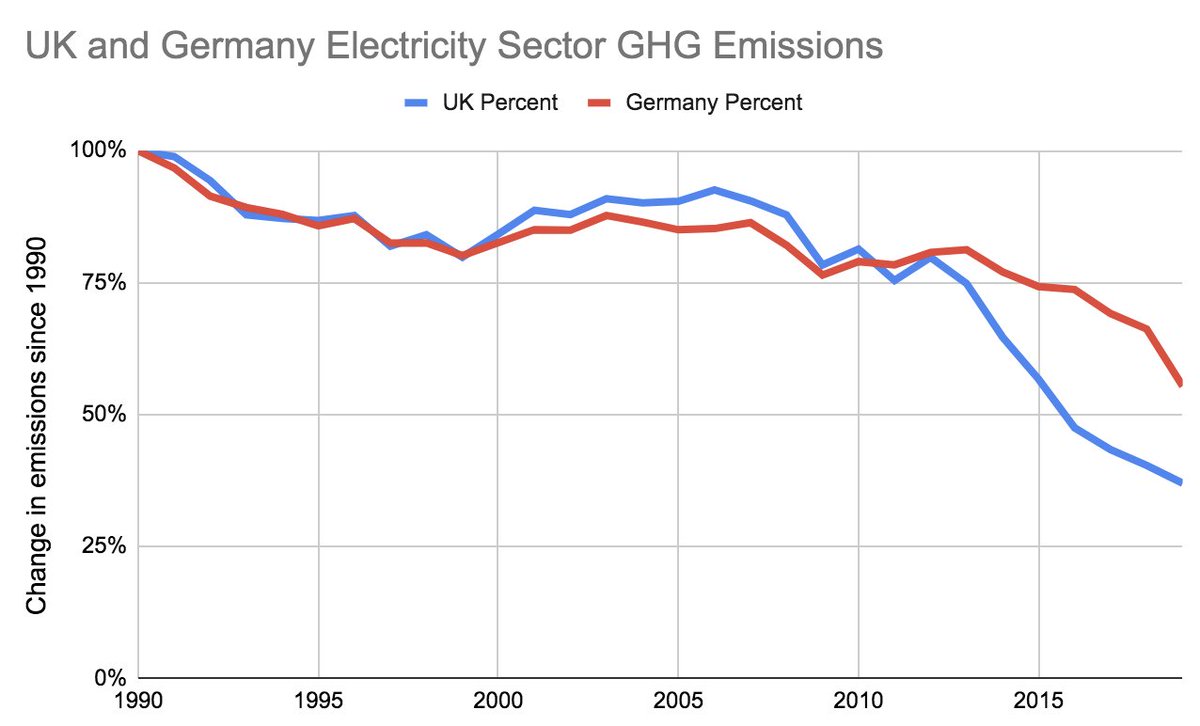
Germany and the UK both lead the world in renewables, representing 40% of their electricity in 2020.
But UK electricity emissions have fallen 70% since 1990, while Germany's have only fallen by 50%. UK has prioritized replacing coal, while Germany has shut down nuclear first.
But UK electricity emissions have fallen 70% since 1990, while Germany's have only fallen by 50%. UK has prioritized replacing coal, while Germany has shut down nuclear first.

This graph also exaggerates progress a bit given the anomalous nature of 2020; here is what it looks like if we just examine emissions through the (pre-pandemic) 2019. 

Today Germany closed 3 of its remaining 6 nuclear reactors. Regardless of what you think of the economic viability of new nuclear reactors, closing down existing plants ahead of coal is hard to square with the idea of treating climate change like a crisis.
Note that the 40% renewables mentioned in the initial tweet is the share of annual generation from of non-hydro renewables from BP's Statistical Review of World Energy 2021. Hydroelectric generation is a relatively minor player in both countries.
• • •
Missing some Tweet in this thread? You can try to
force a refresh








